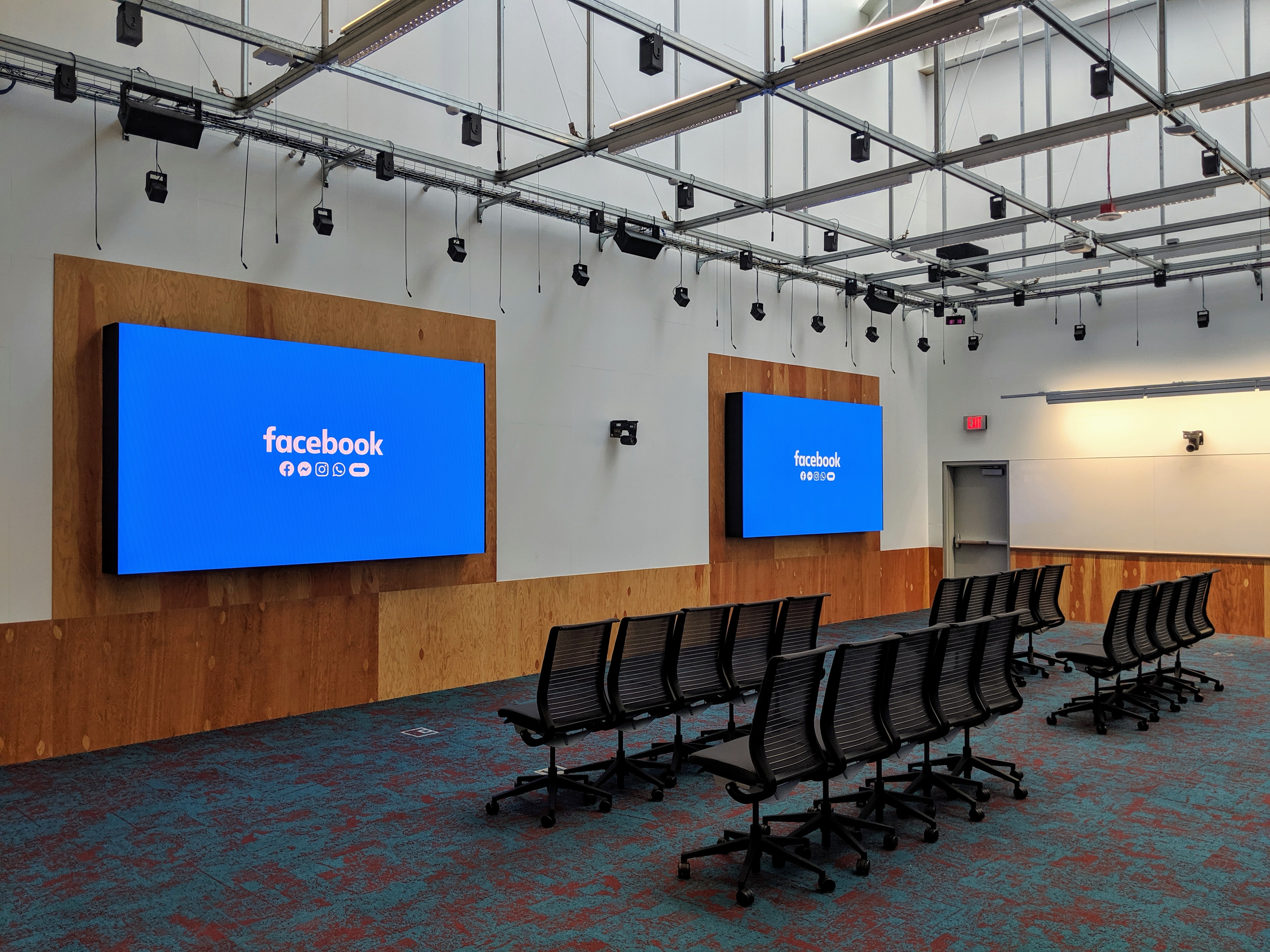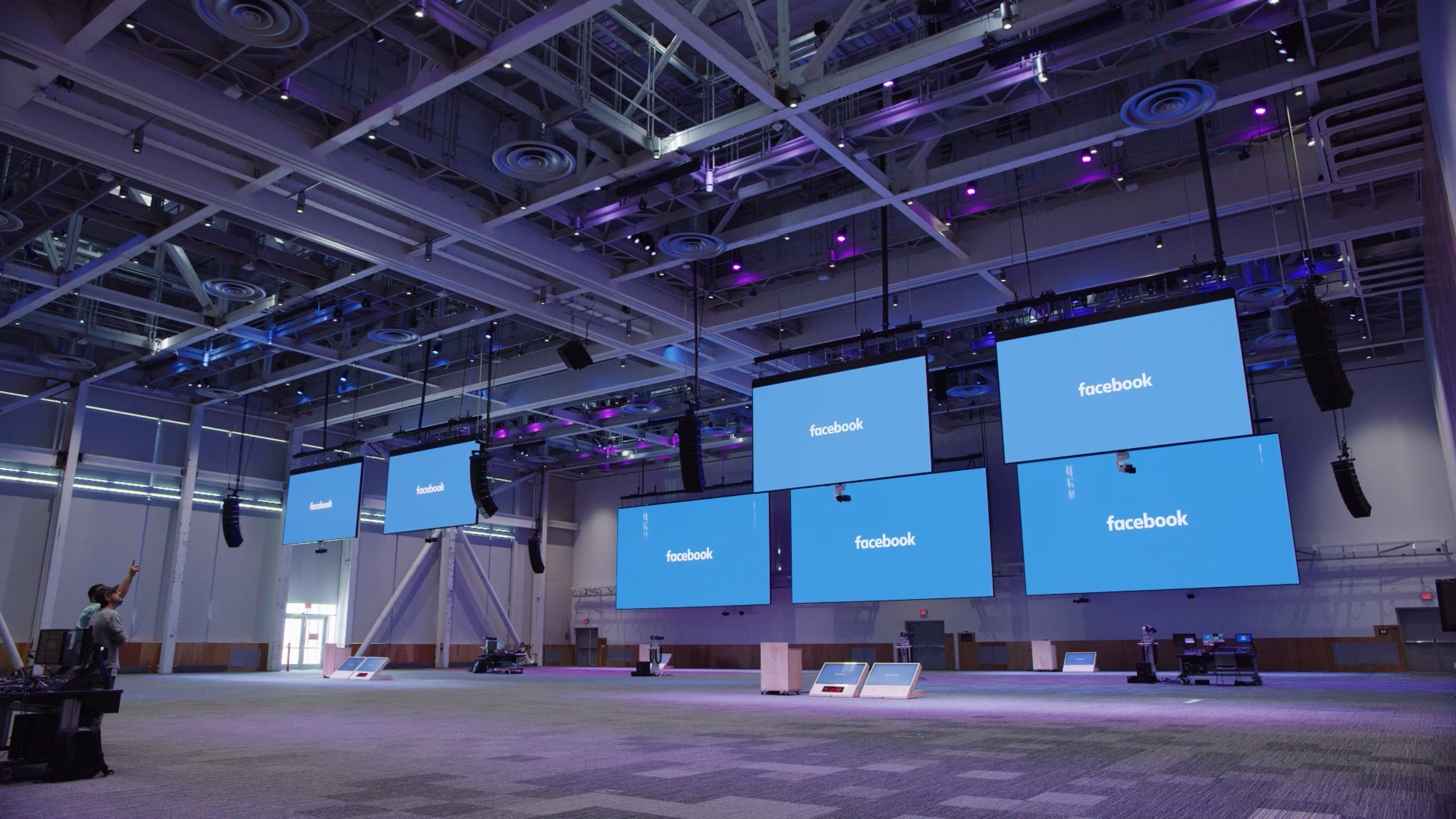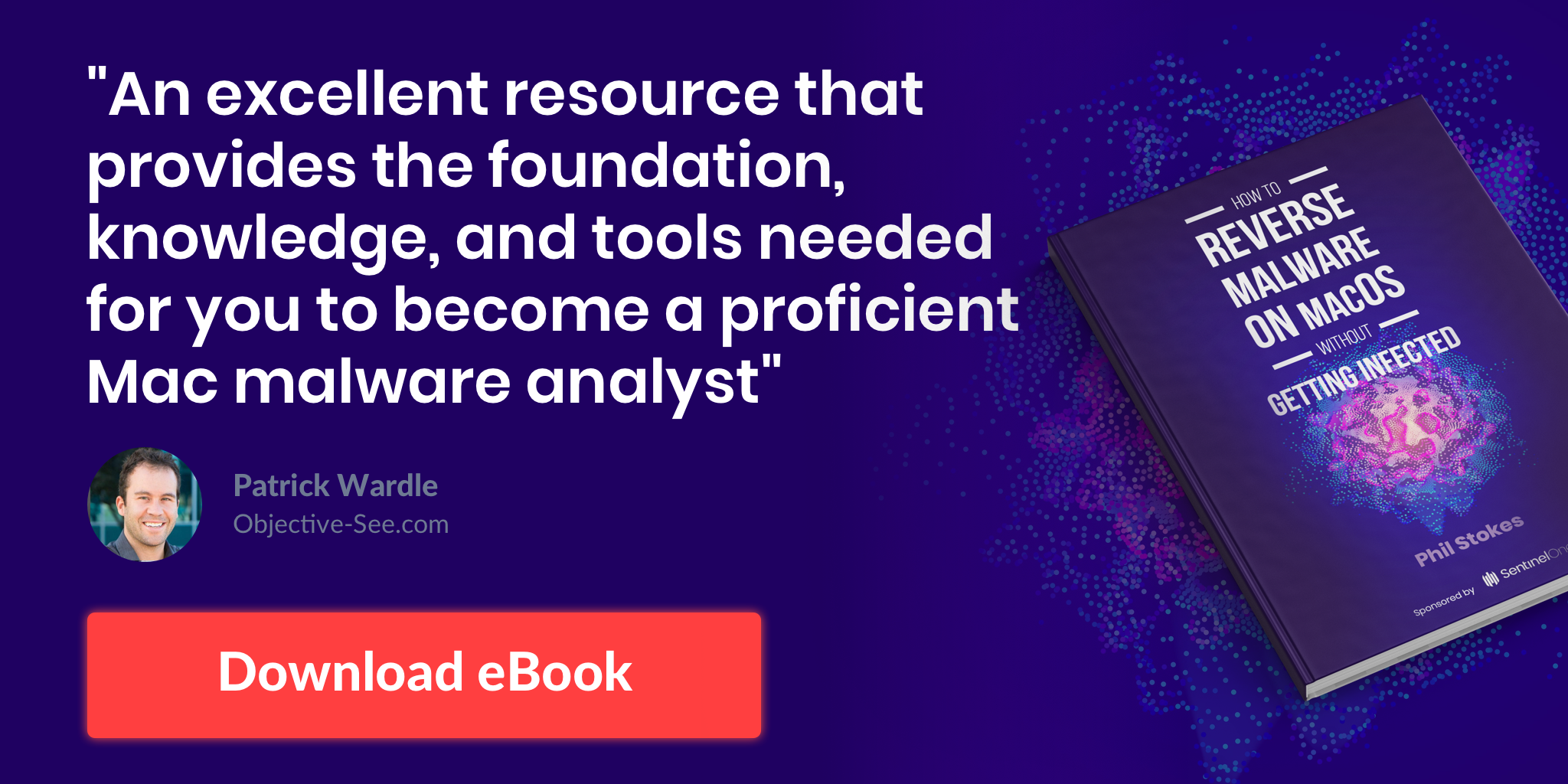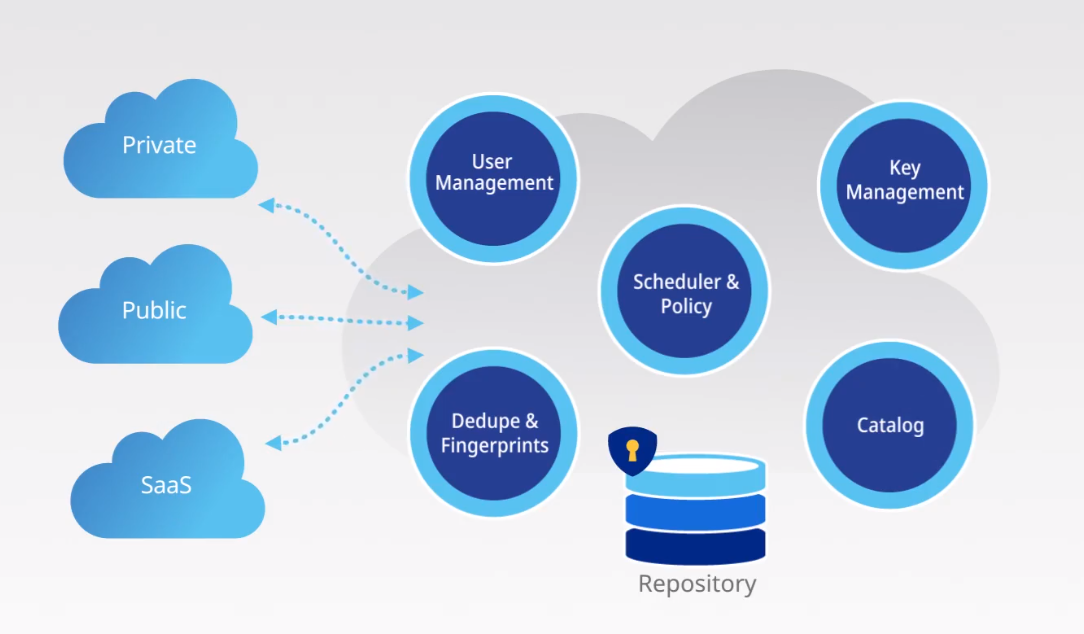How Facebook does IT
If you have ever worked at any sizable company, the word “IT” probably doesn’t conjure up many warm feelings. If you’re working for an old, traditional enterprise company, you probably don’t expect anything else, though. If you’re working for a modern tech company, though, chances are your expectations are a bit higher. And once you’re at the scale of a company like Facebook, a lot of the third-party services that work for smaller companies simply don’t work anymore.
To discuss how Facebook thinks about its IT strategy and why it now builds most of its IT tools in-house, I sat down with the company’s CIO, Atish Banerjea, at its Menlo Park headquarter.
Before joining Facebook in 2016 to head up what it now calls its “Enterprise Engineering” organization, Banerjea was the CIO or CTO at companies like NBCUniversal, Dex One and Pearson.
“If you think about Facebook 10 years ago, we were very much a traditional IT shop at that point,” he told me. “We were responsible for just core IT services, responsible for compliance and responsible for change management. But basically, if you think about the trajectory of the company, were probably about 2,000 employees around the end of 2010. But at the end of last year, we were close to 37,000 employees.”
Traditionally, IT organizations rely on third-party tools and software, but as Facebook grew to this current size, many third-party solutions simply weren’t able to scale with it. At that point, the team decided to take matters into its own hands and go from being a traditional IT organization to one that could build tools in-house. Today, the company is pretty much self-sufficient when it comes to running its IT operations, but getting to this point took a while.
“We had to pretty much reinvent ourselves into a true engineering product organization and went to a full ‘build’ mindset,” said Banerjea. That’s not something every organization is obviously able to do, but, as Banerjea joked, one of the reasons why this works at Facebook “is because we can — we have that benefit of the talent pool that is here at Facebook.”
The company then took this talent and basically replicated the kind of team it would help on the customer side to build out its IT tools, with engineers, designers, product managers, content strategies, people and research. “We also made the decision at that point that we will hold the same bar and we will hold the same standards so that the products we create internally will be as world-class as the products we’re rolling out externally.”
One of the tools that wasn’t up to Facebook’s scaling challenges was video conferencing. The company was using a third-party tool for that, but that just wasn’t working anymore. In 2018, Facebook was consuming about 20 million conference minutes per month. In 2019, the company is now at 40 million per month.
Besides the obvious scaling challenge, Facebook is also doing this to be able to offer its employees custom software that fits their workflows. It’s one thing to adapt existing third-party tools, after all, and another to build custom tools to support a company’s business processes.
Banerjea told me that creating this new structure was a relatively easy sell inside the company. Every transformation comes with its own challenges, though. For Facebook’s Enterprise Engineering team, that included having to recruit new skill sets into the organization. The first few months of this process were painful, Banerjea admitted, as the company had to up-level the skills of many existing employees and shed a significant number of contractors. “There are certain areas where we really felt that we had to have Facebook DNA in order to make sure that we were actually building things the right way,” he explained.
Facebook’s structure creates an additional challenge for the team. When you’re joining Facebook as a new employee, you have plenty of teams to choose from, after all, and if you have the choice of working on Instagram or WhatsApp or the core Facebook app — all of which touch millions of people — working on internal tools with fewer than 40,000 users doesn’t sound all that exciting.
“When young kids who come straight from college and they come into Facebook, they don’t know any better. So they think this is how the world is,” Banerjea said. “But when we have experienced people come in who have worked at other companies, the first thing I hear is ‘oh my goodness, we’ve never seen internal tools of this caliber before.’ The way we recruit, the way we do performance management, the way we do learning and development — every facet of how that employee works has been touched in terms of their life cycle here.”
Facebook first started building these internal tools around 2012, though it wasn’t until Banerjea joined in 2016 that it rebranded the organization and set up today’s structure. He also noted that some of those original tools were good, but not up to the caliber employees would expect from the company.
“The really big change that we went through was up-leveling our building skills to really become at the same caliber as if we were to build those products for an external customer. We want to have the same experience for people internally.”
The company went as far as replacing and rebuilding the commercial Enterprise Resource Planning (ERP) system it had been using for years. If there’s one thing that big companies rely on, it’s their ERP systems, given they often handle everything from finance and HR to supply chain management and manufacturing. That’s basically what all of their backend tools rely on (and what companies like SAP, Oracle and others charge a lot of money for). “In that 2016/2017 time frame, we realized that that was not a very good strategy,” Banerjea said. In Facebook’s case, the old ERP handled the inventory management for its data centers, among many other things. When that old system went down, the company couldn’t ship parts to its data centers.
“So what we started doing was we started peeling off all the business logic from our backend ERP and we started rewriting it ourselves on our own platform,” he explained. “Today, for our ERP, the backend is just the database, but all the business logic, all of the functionality is actually all custom written by us on our own platform. So we’ve completely rewritten our ERP, so to speak.”
In practice, all of this means that ideally, Facebook’s employees face far less friction when they join the company, for example, or when they need to replace a broken laptop, get a new phone to test features or simply order a new screen for their desk.
One classic use case is onboarding, where new employees get their company laptop, mobile phones and access to all of their systems, for example. At Facebook, that’s also the start of a six-week bootcamp that gets new engineers up to speed with how things work at Facebook. Back in 2016, when new classes tended to still have less than 200 new employees, that was still mostly a manual task. Today, with far more incoming employees, the Enterprise Engineering team has automated most of that — and that includes managing the supply chain that ensures the laptops and phones for these new employees are actually available.
But the team also built the backend that powers the company’s more traditional IT help desks, where employees can walk up and get their issues fixed (and passwords reset).
To talk more about how Facebook handles the logistics of that, I sat down with Koshambi Shah, who heads up the company’s Enterprise Supply Chain organization, which pretty much handles every piece of hardware and software the company delivers and deploys to its employees around the world (and that global nature of the company brings its own challenges and additional complexity). The team, which has fewer than 30 people, is made up of employees with experience in manufacturing, retail and consumer supply chains.
Typically, enterprises offer their employees a minimal set of choices when it comes to the laptops and phones they issue to their employees, and the operating systems that can run on them tend to be limited. Facebook’s engineers have to be able to test new features on a wide range of devices and operating systems. There are, after all, still users on the iPhone 4s or BlackBerry that the company wants to support. To do this, Shah’s organization actually makes thousands of SKUs available to employees and is able to deliver 98% of them within three days or less. It’s not just sending a laptop via FedEx, though. “We do the budgeting, the financial planning, the forecasting, the supply/demand balancing,” Shah said. “We do the asset management. We make sure the asset — what is needed, when it’s needed, where it’s needed — is there consistently.”
In many large companies, every asset request is double guessed. Facebook, on the other hand, places a lot of trust in its employees, it seems. There’s a self-service portal, the Enterprise Store, that allows employees to easily request phones, laptops, chargers (which get lost a lot) and other accessories as needed, without having to wait for approval (though if you request a laptop every week, somebody will surely want to have a word with you). Everything is obviously tracked in detail, but the overall experience is closer to shopping at an online retailer than using an enterprise asset management system. The Enterprise Store will tell you where a device is available, for example, so you can pick it up yourself (but you can always have it delivered to your desk, too, because this is, after all, a Silicon Valley company).
For accessories, Facebook also offers self-service vending machines, and employees can walk up to the help desk.
The company also recently introduced an Amazon Locker-style setup that allows employees to check out devices as needed. At these smart lockers, employees simply have to scan their badge, choose a device and, once the appropriate door has opened, pick up the phone, tablet, laptop or VR devices they were looking for and move on. Once they are done with it, they can come back and check the device back in. No questions asked. “We trust that people make the right decision for the good of the company,” Shah said. For laptops and other accessories, the company does show the employee the price of those items, though, so it’s clear how much a certain request costs the company. “We empower you with the data for you to make the best decision for your company.”
Talking about cost, Shah told me the Supply Chain organization tracks a number of metrics. One of those is obviously cost. “We do give back about 4% year-over-year, that’s our commitment back to the businesses in terms of the efficiencies we build for every user we support. So we measure ourselves in terms of cost per supported user. And we give back 4% on an annualized basis in the efficiencies.”
Unsurprisingly, the company has by now gathered enough data about employee requests (Shah said the team fulfills about half a million transactions per year) that it can use machine learning to understand trends and be proactive about replacing devices, for example.
Facebooks’ Enterprise Engineering group doesn’t just support internal customers, though. Another interesting aspect to Facebook’s Enterprise Engineering group is that it also runs the company’s internal and external events, including the likes of F8, the company’s annual developer conference. To do this, the company built out conference rooms that can seat thousands of people, with all of the logistics that go with that.
The company also showed me one of its newest meeting rooms where there are dozens of microphones and speakers hanging from the ceiling that make it easier for everybody in the room to participate in a meeting and be heard by everybody else. That’s part of what the organization’s “New Builds” team is responsible for, and something that’s possible because the company also takes a very hands-on approach to building and managing its offices.
Facebook also runs a number of small studios in its Menlo Park and New York offices, where both employees and the occasional external VIP can host Facebook Live videos.
Indeed, live video, it seems, is one of the cornerstones of how Facebook employees collaborate and help employees who work from home. Typically, you’d just use the camera on your laptop or maybe a webcam connected to your desktop to do so. But because Facebook actually produces its own camera system with the consumer-oriented Portal, Banerjea’s team decided to use that.
“What we have done is we have actually re-engineered the Portal,” he told me. “We have connected with all of our video conferencing systems in the rooms. So if I have a Portal at home, I can dial into my video conferencing platform and have a conference call just like I’m sitting in any other conference room here in Facebook. And all that software, all the engineering on the portal, that has been done by our teams — some in partnership with our production teams, but a lot of it has been done with Enterprise Engineering.”
Unsurprisingly, there are also groups that manage some of the core infrastructure and security for the company’s internal tools and networks. All of those tools run in the same data centers as Facebook’s consumer-facing applications, though they are obviously sandboxed and isolated from them.
It’s one thing to build all of these tools for internal use, but now, the company is also starting to think about how it can bring some of these tools it built for internal use to some of its external customers. You may not think of Facebook as an enterprise company, but with its Workplace collaboration tool, it has an enterprise service that it sells externally, too. Last year, for the first time, Workplace added a new feature that was incubated inside of Enterprise Engineering. That feature was a version of Facebook’s public Safety Check that the Enterprise Engineering team had originally adapted to the company’s own internal use.
“Many of these things that we are building for Facebook, because we are now very close partners with our Workplace team — they are in the enterprise software business and we are the enterprise software group for Facebook — and many [features] we are building for Facebook are of interest to Workplace customers.”
As Workplace hit the market, Banerjea ended up talking to the CIOs of potential users, including the likes of Delta Air Lines, about how Facebook itself used Workplace internally. But as companies started to adopt Workplace, they realized that they needed integrations with existing third-party services like ERP platforms and Salesforce. Those companies then asked Facebook if it could build those integrations or work with partners to make them available. But at the same time, those customers got exposed to some of the tools that Facebook itself was building internally.
“Safety Check was the first one,” Banerjea said. “We are actually working on three more products this year.” He wouldn’t say what these are, of course, but there is clearly a pipeline of tools that Facebook has built for internal use that it is now looking to commercialize. That’s pretty unusual for any IT organization, which, after all, tends to only focus on internal customers. I don’t expect Facebook to pivot to an enterprise software company anytime soon, but initiatives like this are clearly important to the company and, in some ways, to the morale of the team.
This creates a bit of friction, too, though, given that the Enterprise Engineering group’s mission is to build internal tools for Facebook. “We are now figuring out the deployment model,” Banerjea said. Who, for example, is going to support the external tools the team built? Is it the Enterprise Engineering group or the Workplace team?
Chances are then, that Facebook will bring some of the tools it built for internal use to more enterprises in the long run. That definitely puts a different spin on the idea of the consumerization of enterprise tech. Clearly, not every company operates at the scale of Facebook and needs to build its own tools — and even some companies that could benefit from it don’t have the resources to do so. For Facebook, though, that move seems to have paid off and the tools I saw while talking to the team definitely looked more user-friendly than any off-the-shelf enterprise tools I’ve seen at other large companies.












 Okay, maybe a trip to the dentist’s office is still preferable. In any case, today is the second Tuesday of the month, which means it’s once again Patch Tuesday (or — depending on your setup and when you’re reading this post — Reboot Wednesday). Microsoft today released patches to fix some 93 vulnerabilities in Windows and related software, 35 of which affect various Server versions of Windows, and another 70 that apply to the Windows 10 operating system.
Okay, maybe a trip to the dentist’s office is still preferable. In any case, today is the second Tuesday of the month, which means it’s once again Patch Tuesday (or — depending on your setup and when you’re reading this post — Reboot Wednesday). Microsoft today released patches to fix some 93 vulnerabilities in Windows and related software, 35 of which affect various Server versions of Windows, and another 70 that apply to the Windows 10 operating system.